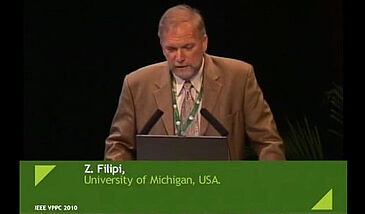En ligne depuis le 06/09/2010
0/5 (0)

Description
Driving cycles play an important role in analysis and design of hybrid propulsion systems. Their role is magnified in case of Plug-In Hybrids, since driving patterns have a strong impact on specific energy consumption, ability of the vehicle to provide pure electric operation, range of charge depleting operation, and finally assessments of the state-of-charge (SOC) at the beginning of charging. Certification schedules are commonly used, but in case of PHEV standard cycles are repeated many times to study the charge depleting operation. While this is useful for comparisons with results in literature, it is not representative of real-world driving. Therefore, characterizing the naturalistic driving patterns and generating representative real-world schedules is essential for PHEV design and control work, studies of technology adoption by real consumers, and assessments of the impact on the grid. This work presents analysis of naturalistic driving data collected in a Midwest region of US, followed by a procedure for synthesizing real-world driving cycles based on that data. The characteristic of the real-world cycles are captured with transition probability matrices (TPMs), and a regression analysis is applied to select significant explanatory variables for determining the most representative synthetic cycles. Validation indicates the ability to generate representative real-world driving cycles for any arbitrary driving distance by combining a stochastic process and statistical methodology.
État
- Valorisé
Langues
- Anglais
Licence Creative Commons
- Partage des conditions à l'identique
- Pas d'utilisation commerciale
- Pas de modification
Types
- Grain audiovisuel

